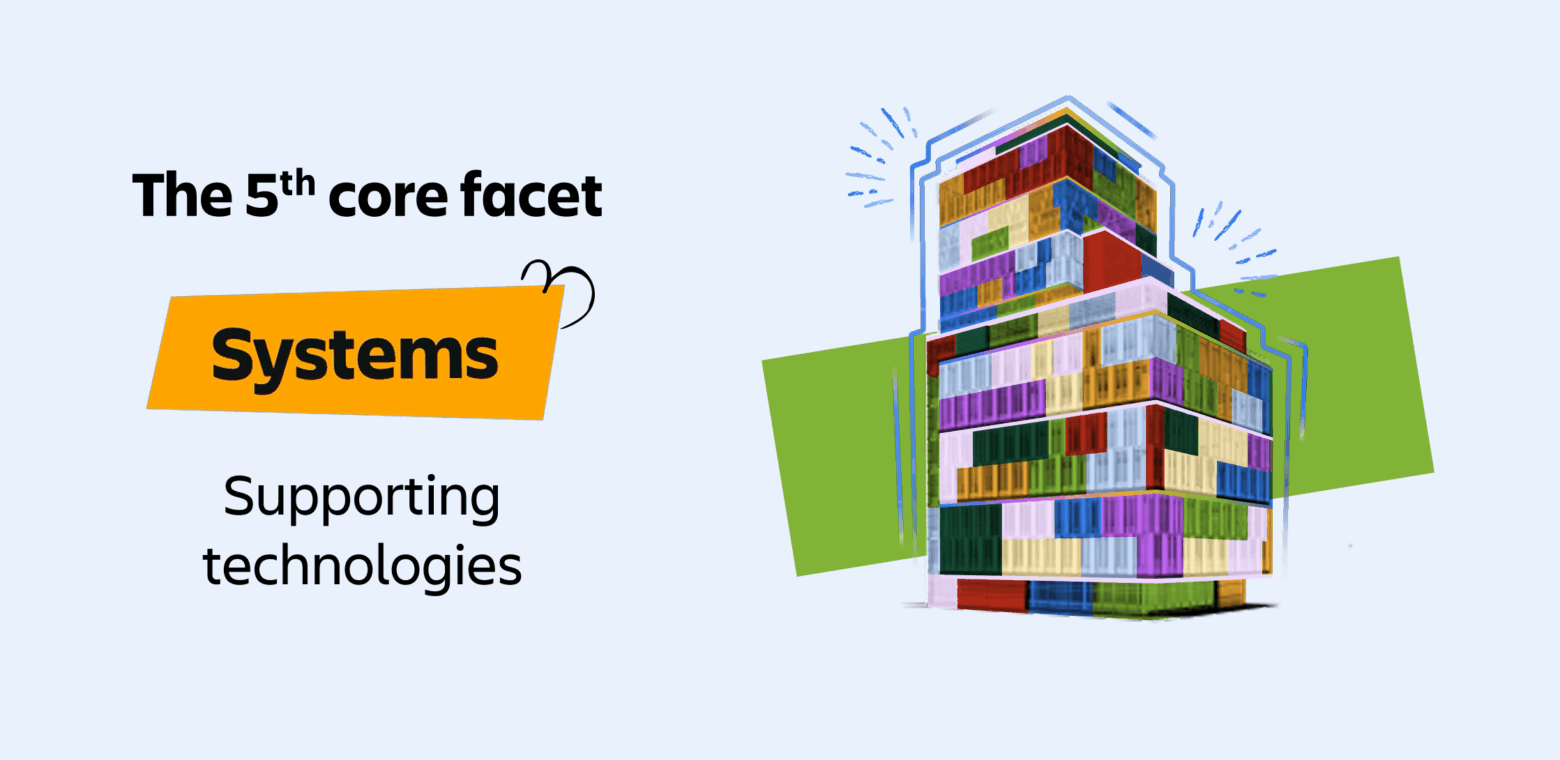In today’s discussion, I will explore the concept of systems and the connection to Enterprise Strategy and Planning (ESP) and outline practical steps to ensure alignment. In the initial post of this series, I outlined Atlassian’s perspective on ESP and its six fundamental components. Let’s explore the crucial connection between systems and strategic priorities, highlighting how they can be the key to achieving organizational goals.
Atlassian defines Enterprise Strategy and Planning (ESP) as the process of setting and operationalizing strategy through a lifecycle of Strategy, Planning, Execution, and Evaluation, focusing on six core facets:
Key Belief
In the fast-paced world of business, achieving strategic goals requires more than visionary leadership and bold objectives. It demands a robust infrastructure that can support, adapt, and propel the organization towards its aspirations. This is where systems, sub-systems, and services come into play. These components are the unsung heroes that form the backbone of any successful strategy, ensuring that every part of the organization works in harmony towards common goals.
Before diving into their strategic significance, it’s essential to understand what systems, sub-systems, and services entail.
Understanding the building blocks
- Systems
- Sub-systems
- Services
Systems
At the highest level, systems are sets of interacting components forming an integrated whole. In a business context, this could refer to everything from IT infrastructure to organizational processes. Systems are designed to achieve specific objectives, and their efficiency and effectiveness directly influence the organization’s ability to execute its strategy.
Sub-systems
These are smaller, component parts of a larger system. Each sub-system has its own specific role and objectives, but it must also align with the broader goals of the system. In a corporate environment, a sub-system might be a department, such as HR or finance, or a specific process within a department.
Services
Services are often the outputs or functionalities provided by systems and sub-systems. They are the means through which the organizational capabilities are delivered, both internally and externally. Services can range from customer support and logistics to IT support and employee training.
The strategic role of systems and sub-systems
- Alignment with Strategic Goals: Design and evolve systems and sub-systems to align with the organization’s strategic objectives. For instance, if a strategy focuses on enhancing customer experience, then optimize the customer service system to support this goal. This might involve implementing advanced CRM software or training staff to improve service delivery.
- Facilitating Adaptability and Innovation: In today’s rapidly changing environment, strategy must be adaptable. Systems and sub-systems enable this adaptability by being flexible and scalable. For example, IT systems that use cloud technology can quickly adapt to changing business needs and support strategic shifts without significant downtime or cost.
- Efficiency and Productivity: Efficient systems and sub-systems reduce waste, lower costs, and boost productivity. They streamline processes and eliminate redundancies to ensure that resources are utilized effectively. This efficiency is crucial for executing strategy, as it allows the organization to focus resources on strategic priorities.
The strategic execution mechanism of services
- Delivering Value: Services are often the touchpoints through which an organization delivers value to its customers. Strategic differentiation often comes from superior service delivery, whether it’s faster delivery times, better customer support, or more personalized services.
- Enhancing Customer Experience: Enhancing customer satisfaction and loyalty is a key element of many strategies. Services play a critical role here, as they directly impact how customers perceive and interact with the company. By aligning services with customer expectations and strategic goals, businesses can create compelling experiences that foster loyalty and drive growth.
- Supporting Core Competencies: Services support the core competencies of a business, allowing it to focus on what it does best. By outsourcing non-core activities or automating routine tasks, organizations can concentrate on strategic initiatives that drive competitive advantage.
Integrating Systems, Sub-systems, and Services for Strategic Success
For systems, sub-systems, and services to effectively support strategy, they must be integrated in a way that ensures smooth operation and alignment with strategic goals. This requires:
- Strategic Planning and Communication: Clear communication of strategic objectives across all levels ensures that everyone understands the role their system or service plays in achieving the larger goals.
- Continuous Improvement and Feedback Loops: Regularly reviewing and refining systems, sub-systems, and services ensures they remain aligned with strategic objectives. Feedback loops facilitate learning and adaptation, allowing systems to evolve in response to new challenges and opportunities.
- Technology Integration: Leveraging technology to integrate systems and services can significantly enhance their efficiency and effectiveness. For example, using integrated software solutions can ensure that data flows seamlessly across systems, providing real-time insights that drive strategic decision-making.
Systems, sub-systems, and services are the foundational elements that support and drive strategic success. By ensuring these components are aligned with strategic goals, adaptable to change, and efficient in operation, organizations can build a robust infrastructure that not only sustains but accelerates their strategic ambitions. In a world where strategic advantage is often fleeting, a strong foundation built on well-integrated systems, sub-systems, and services can be a game-changer.
Metrics
Lagging Indicator
Process Cycle Efficiency (PCE) is a metric to measure a process’s efficiency by determining the percentage of time spent on activities that add value to the product or service versus time spent on non-value-added activities. It helps organizations identify and eliminate waste, improve productivity, and enhance customer satisfaction.
The PCE is calculated using the following formula: PCE = (Value-Added Time / Lead Time) x 100
Leading Indicators
- Value-Added Time: The time spent on activities that directly contribute to the final product or service.
- Lead Time: The total time it takes to complete the process, from start to finish.
- Non-Value-Added Time: The time spent on activities that don’t directly contribute to the final product or service, such as waiting, rework, or unnecessary steps.
- Learn more about ESP and Strategy Collection
- Download the full whitepaper now!
- State of Teams 2025
